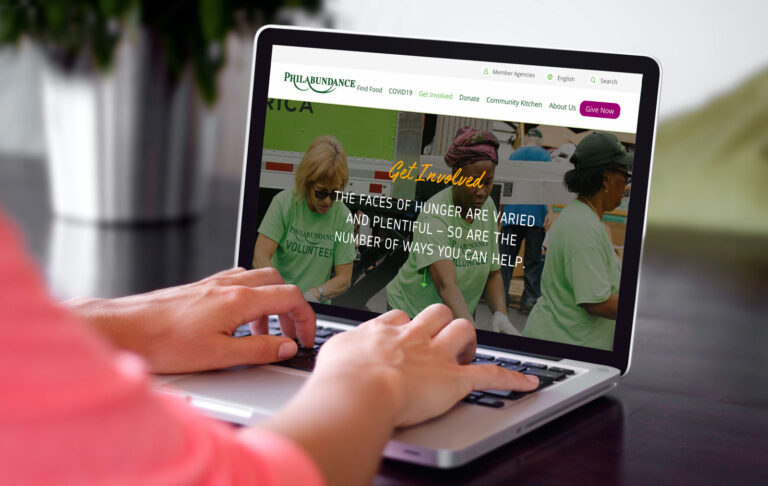Is your team spending valuable time maintaining your website instead of advancing your mission?
For nonprofit organizations, every resource is precious. Time is money. And in today’s digital world, your website plays a vital role in driving donations, delivering services, building community, and supporting the overall mission of your nonprofit. Yet, far too often, ongoing website maintenance falls by the wayside, seen as a “nice to have” rather than an essential.
The truth? Regular website maintenance is critical for nonprofits. It ensures your site remains secure, functional, and aligned with your mission. Let’s explore what website maintenance really means and why it should be a top priority for your organization.

What Is Website Maintenance?
Website maintenance refers to the ongoing tasks needed to keep your site running smoothly. These tasks often include:
- Updating content management systems (like WordPress)
- Updating plugins
- Applying security patches
- Optimizing for performance and accessibility
- Monitoring uptime and functionality
- Managing backups and recovery plans
For nonprofits using WordPress, maintenance involves updating the WordPress core, plugins, and themes to prevent conflicts and vulnerabilities.
Why Website Maintenance Is Crucial for Nonprofits
WordPress is an open source content management system (CMS) built on the PHP programming language and using a MySQL database, which all run on a web server. Together, these pieces make up what is called a “stack.” When any piece of the stack gets updated, it has the potential to affect the others. With so many moving parts, your website isn’t a “set it and forget it” tool – it’s a living, breathing part of your organization.
Security Protection
Nonprofit websites often store sensitive data: donor information, volunteer records, and more. Unfortunately, this makes them a target for hackers. Regular maintenance helps patch security holes and protect your organization from threats like malware, phishing, and data breaches.
Reliability and Performance
Whether someone is making a donation, signing up for an event, or accessing important resources, a slow or broken website can harm your credibility and reduce engagement. Routine maintenance ensures faster load times, fewer bugs, and a better user experience for all visitors.
Accessibility and Compliance
Many nonprofits serve diverse audiences, including people with disabilities. Website maintenance includes monitoring accessibility standards (like WCAG) to ensure your site is usable and inclusive for all visitors.
Future-Proofing Your Technology
The tech landscape evolves quickly. Hosting platforms, browsers, and third-party tools all change — and so must your website. Ongoing maintenance keeps your site compatible with the latest technology, helping you avoid major overhauls down the line.
Supporting Your Mission
Every minute spent troubleshooting website issues is time not spent on your programs and impact. A well-maintained website supports your operations quietly in the background, so your team can focus on what matters most: advancing your mission.
Ongoing Support
A great maintenance plan means more than just updates, it ensures you have access to your agency’s team when things go wrong. Whether your website goes down or something malfunctions on the front-end, having a maintenance plan in place gives you peace of mind knowing that support is just a phone call or email away. This allows your nonprofit to stay focused on its mission while your agency handles any issues that arise with the site.
Website Hosting
This is also a good time to shout out Pantheon, Push10’s preferred web hosting platform. Sites hosted on Pantheon have several additional protections against attacks from bad actors. Code hosted on a live Pantheon site cannot be changed directly: it must go through the site’s development and testing environments first. This prevents malicious code from having an immediate impact on the site, and gives us a baked-in deployment and testing process for our own code changes. Pantheon also automates management of SSL certificates, which keeps your site running on the secure HTTPS protocol. Finally, in the unlikely event that malicious code or bugs make their way onto the live site, Pantheon’s automated backups provide an easy solution by allowing us to revert to a recent version of the site.
Final Thoughts
Website maintenance isn’t glamorous, but it’s absolutely vital. By investing in regular updates, security checks, and performance monitoring, your nonprofit builds trust, protects its data, and ensures a seamless experience for supporters and stakeholders.
Ready to take the stress out of managing your website? Let’s talk about a custom maintenance plan that fits your needs.
I'm InterestedRelated Insights
Mastering URLs: A Nonprofit’s Guide to Web Addresses
Discover the secrets to creating clear, memorable URLs for your nonprofit's website. Learn best practices for improving user experience and boosting your site's SEO with simple, effective web addresses.
19
Jul

19
Jul
2025 Nonprofit Marketing Trends: The Vital Role of Branding and Web Design
Before exploring this year’s marketing trends, let’s examine why your nonprofit’s brand identity and web presence must be prioritized.
8
Jan

8
Jan
5 Innovative Ways to Showcase Your Nonprofit’s Impact on Your Website
“Show your impact” – a daunting task that so many in the nonprofit space have come to dread. Yet, no matter how difficult it is, measuring and communicating effectiveness in your marketing is a critical objective for nonprofits around the world.
18
Oct

18
Oct


